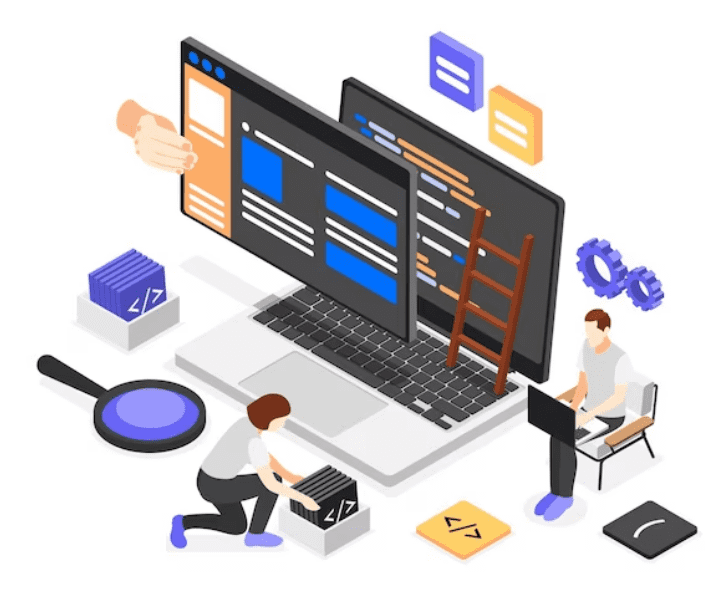Guide to Software Testing: Why, Types, & Best Practices

Application development companies (and their customers) can no longer ignore the relevance of high-quality software products and their impact on their business. One recent example is Tesla automobile having to recall 135,000 vehicles over a computer memory failure.
In today's competitive market, software bugs or performance issues are detrimental to business growth and customer satisfaction. But with an efficient software testing strategy, application development companies can save millions of dollars from business losses and product failures.
What is Software Testing?
Software testing is the process that ensures software products meet their client requirements and are free of any major defects (or bugs).
Be it manual or automated software testing, it can address various product-related issues, including:
- Human errors or bugs
- Slow loading or performance issues
- Incorrect implementation of product features
- Security-related flaws
- Non (or partial) implementation of customer requirements
Traditionally, software testing was executed later in the software developmentlifecycle (SDLC). This was inefficient, as software testers had a limited timeframe to detect flaws before the final product release. This is no longer the case in the age of DevOps and Agile management.
Also referred to as software testing lifecycle (or STLC), software testing in an Agile testing environment is a continuous testing process designed for modern product requirements.
What are the different types of software testing? Let's discuss that next.
Types of Software Testing

Here are a few popular types of software testing used in product development:
1. Unit Testing
Unit testing focuses on ensuring that the smallest component (or unit) of the application is functioning as expected.
2. Integration Testing
Primarily, integration testing aims to test if the software components are in sync with the functionality. This testing can easily detect any defects between the software modules and product components.
3. Functional Testing
Functional testing is the form of software testing that checks if the product satisfies its functional requirements. Also referred to as "black-box testing," this method checks each product function by emulating various real-life business scenarios.
4. Performance Testing
Performance testing can test the runtime performance of the application under various workloads. In essence, this method can determine the response speed of the product using real-life scenarios.
5. Regression Testing
Regression testing can measure the impact of a new feature (or functionality) on the overall product functionality. This type of testing is performed only when a new feature (or software module) is added to an existing application. Regression testing aims to ensure that the overall product performs efficiently (as before) after additions.
6. Acceptance Testing
As the name suggests, acceptance testing is a form of software testing to check if the delivered product meets the customer's requirements. Acceptance testing is purely based on the defined user requirements – and to what level the product satisfies those requirements.
7. Usability Testing
Usability testing can validate how efficiently any customer can perform their tasks using the delivered product. With this method, application testers consider the end user's perspective when performing the test.
8. Security Testing
Software products are vulnerable to vulnerabilities, threats, and cyberattacks. The purpose of security testing is to find all these product vulnerabilities and prevent attacks from hackers.
9. Accessibility Testing
As an integral part of usability testing, accessibility testing aims at determining if persons with physical disabilities can easily use software products. Common disabilities include blindness or cognitive impairments.
SUGGESTED READ- Types of Testing in Software Engineering
Benefits of Software Testing

In any product development company, software testing of any type can complement the development process, thus enhancing the final product quality. When initiated early in the SDLC, software testing can detect bugs and errors, leading to faster resolution.
Let’s get into more such benefits:
Product Quality
By identifying and rectifying glitches early in the development cycle, testing ensures that the final product is polished, efficient, and free of critical errors.
Customer Satisfaction
The primary goal of software testing is to preemptively discover and address any issues, ensuring that the end-users receive a product that meets, if not exceeds, their expectations. A special mention goes to usability testing, which evaluates the software's user-friendliness, ensuring users can easily navigate and utilize the application.
Economic Efficiency
An ounce of prevention is worth a pound of cure. By investing in thorough testing during the initial phases, organizations can avoid the exorbitant costs associated with fixing bugs later in the cycle. Early detection reduces the cost of rectifications and accelerates the time-to-market.
Ensuring Security
In an era of rampant data breaches and cyber threats, security testing emerges as the unsung hero. This specialized form of testing rigorously assesses software for potential vulnerabilities, safeguarding it from both internal and external threats.
Download the 100% Free Guide
Master the essentials of advanced approach
to object recognition.

Best Practices For Software Testing
Here are some golden rules to elevate your software testing game:
Embrace Continuous Testing
Don't wait for the final act. Test each element as it rolls out. This real-time validation in genuine environments mitigates risks and fine-tunes functionality and design.
User Involvement
Remember, it's for the users, by the developers. Engage them, ask open-ended questions, and understand their needs. This invaluable insight ensures the software resonates with its audience.
Break It Down
Think of testing as a puzzle. Breaking tests into smaller chunks saves time and sharpens the analysis. It's all about being efficient and insightful.
Metrics Matter
A picture and a well-integrated dashboard are worth a thousand words. It offers a snapshot of the project's health, ensuring everyone's on the same page.
No Coders
Programmers have the perfect knowledge when it comes to code. But when it comes to writing test cases, it is best to keep them separate. Why? To avoid any unintentional bias and ensure a fresh perspective.
When & Why Should Software Testing Be Automated?
In any application development company, manual or "human" software testing is beneficial but has its share of limitations. Despite the best efforts from the QA team, delivered products still have critical bugs and performance issues. With test automation, product companies can deliver bug-free and high-quality applications.
When is the best time to automate software testing? Here are some plausible scenarios:
- To save money incurred on hiring a large testing team or investing in multiple testing tools.
- When the QA team executes the same test cases repeatedly, thus consuming both time and effort.
- To speed up product releases without compromising on software testing.
- To improve the product quality in the shortest timeframe.
Why should product development companies opt for automated software testing? Here are a few of its benefits:
- It can save both time and money, thus enabling a shorter time-to-market for applications.
- It can improve the overall test coverage, thus enhancing product quality.
- It reduces the workload on the current QA or testing team, thus increasing their morale.
Conclusion
Product companies have a host of test automation tools to improve the effectiveness of their software testing. Most of these automation tools adopt a "black box" approach that does not address the complexity of software testing.
At ACCELQ, we offer a "codeless" approach to test automation that enhances its power, flexibility, and discipline. The ACCELQ codeless test automation platform leverages the power of Agile frameworks to deliver both modularity and reusability. This can accelerate software development and reduce maintenance costs.
ACCELQ can elevate the quality of your software testing. Want to know more? Sign up for a product demo!
Discover More
 Effective Strategies for Testing Your Flutter Apps
Effective Strategies for Testing Your Flutter Apps
Effective Strategies for Testing Your Flutter Apps
 Optimize Workday Testing With ACCELQ: The Smart Approach
Optimize Workday Testing With ACCELQ: The Smart Approach
































